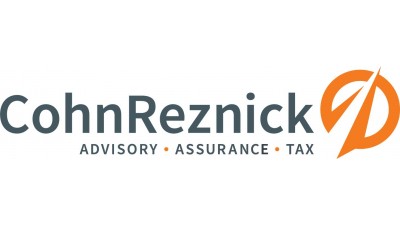For Fresh Ideas, Head To The Innovation Lab

CohnReznick became the first accounting firm of its size to open an innovation lab at its corporate HQ in 2016. Featuring an entire wall of multi-touch displays and business collaboration tools to facilitate in-room and online collaboration, the space was built from the ground up to give clients a dedicated place for problem-solving.
As strict organizational hierarchies, risk-averse cultures and rigid processes fail in an economy dominated by technology, speed and millennials, innovation spaces have cropped up as hubs for creative thinking.
More centers continue to open as innovation is seen as a cornerstone of business success and longevity. According to a Forbes survey, 65% of senior executives face increased pressure to innovate.
Commercial real estate is no exception. As the industry begins to incorporate more technology into day-to-day operations, leaders are looking for ways to push boundaries on how property is acquired, managed and designed. Programs like MIT’s Real Estate Innovation Center focus on creating a community of multidisciplinary researchers who can collaborate to find solutions that enhance the built environment.
At MIT, the lab explores innovations in design that lead to new building types, new processes in construction such as 3D printing and modular construction and new data technologies with the potential to transform the organization of cities.
But innovation is easier said than done. Around $1.6 trillion was spent on research and development globally in 2014. Despite this investment, research showed more than 85% of new products fail, often from a lack of corporate support. Innovation centers circumvent bureaucratic resistance by giving employees a safe, physical space to test new ideas.
Determining where an innovation lab sets up shop is as important as the services it offers. Labs often crop up in cities with established reputations as meccas for creative thinking. From July 2015 to February 2016, 67 innovation centers were opened or announced in 20 countries. Silicon Valley remains the capital of the movement, with 58 of these innovation centers, but cities like London, Paris and Singapore have grown in popularity as destinations for innovators.

CohnReznick’s innovation lab takes advantage of its Midtown location in New York City, drawing from the growing pool of tech and creative talent moving into nearby office space. Proximity to talent allows ideas to flow into the center. Rather than relying on access to technology, 51% of innovation centers considered partnerships with local tech companies to be a key objective, according to the Forbes survey.
“Sometimes innovation hides in plain sight," CohnReznick principal Tama Huang said. "It’s about connecting people and ideas in new and different ways. There is nothing magical about our innovation lab, but magic does happen when we are able to show people how to look at things differently. The innovation lab breaks down silos of thinking and seeing, allowing us to achieve real breakthroughs.”
Some companies have gone one step further by turning innovation centers into incubators for startups. Global financial services firm Morgan Stanley hosted four startups founded by women or minorities on the ninth floor of its Time Square HQ for three months last year. The startups formed the first cohort of the firm’s tech-talent accelerator program. Morgan Stanley’s technology division helps run the innovation lab and served as a resource for each startup.
Close contact with the department allowed the fledgling companies to be immersed in real-world problems while giving Morgan Stanley a fresh perspective on solutions.
CohnReznick designed and created its new workspace to help companies transform business models, improve customer engagement and streamline operations. For commercial real estate, the company offers clients services that include advice on merger and acquisition strategy, divestiture planning, due diligence and post-merger technology integration.
On the technology side, visitors to the innovation lab can learn how to defend businesses against growing cybersecurity threats while prototyping new software that will make transactions easier, safer and more efficient.
As the digital economy requires businesses to adapt faster to changing trends and demands, having access to an innovation center could become one of a company’s most valuable assets — besides the people generating new ideas.
To learn more about this Bisnow content partner, click here.

